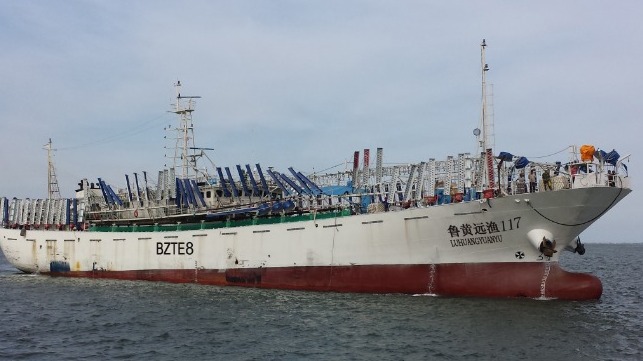Two Chinese Fishing Vessels Detained After Body Found on Board

Indonesian authorities have detained two Chinese fishing vessels after the discovery of a dead Indonesian fisherman on board.
Following a tip-off to Indonesian police, the Lu Huang Yuan Yu 117 and Lu Huang Yuan Yu 118 were boarded in Indonesian territorial seas and taken to a naval base on Batam Island for a search. Police found the frozen body of a 20-year-old fisherman aboard one of the vessels, and they have launched a full investigation into the circumstances.
The investigation occurs against a backdrop of multiple human rights abuse allegations against Chinese fishing vessels with Indonesian crews. In a particularly high-profile case, four crewmembers of the shark-finning vessel Long Xing 629 died on one voyage, and the survivors reported malnutrition and abuse. Three of the dead were buried at sea, according to survivor accounts and video footage.
Rights advocates contend that Indonesian labor recruiters facilitate abuse aboard these foreign vessels by luring first-time seafarers with large salary offers, then withold ing a "security deposit" from their wages so that the new arrivals are immediately in debt. Once on board, the victims' passports are confiscated, and they are subjected to physical abuse and deprived of adequate nutrition, according to advocacy groups. Many are paid just a fraction of the promised wage, some receiving as little as a dollar a day.
Indonesia's Ministry of Maritime Affairs and Fisheries has committed to improving labor practices and worker protections for all Indonesian fishermen, at home and abroad. "The most urgent need right now is to improve the recruitment system, reformulating the payroll system, joint inspection and health protocols," said the ministry's director of capture fisheries, Zulficat Mochtar, at a forum in March.
Indonesia's fisheries have their own history of exploitation. In 2015, Indonesian authorities rescued hundreds of Burmese fishermen from conditions of slavery on the island of Benjina, where they were being held by an Indonesian fishing firm and forced to work without pay. According to the International Organisation for Migration, as many as 4,000 individuals may have been exploited in the scheme over time; the number who did not survive their enslavement is not known.
